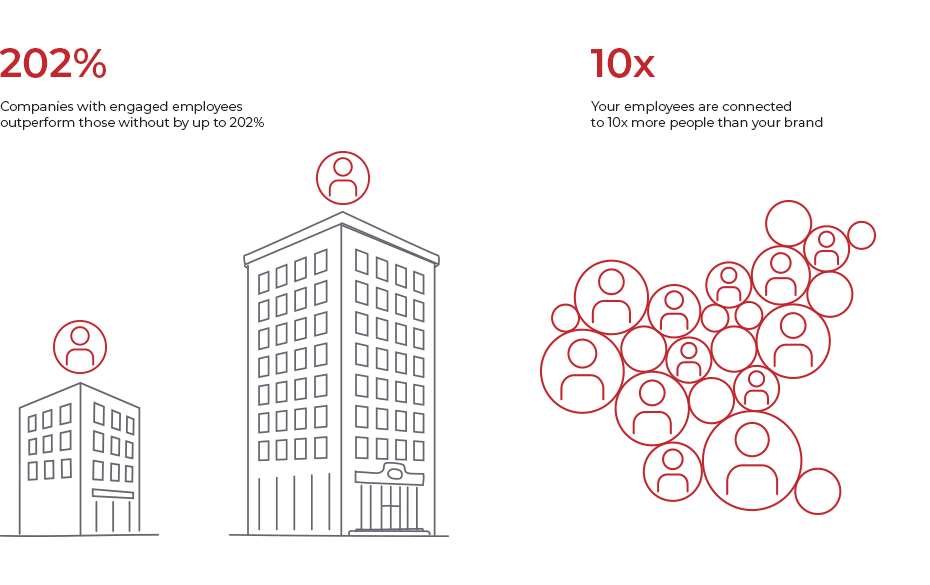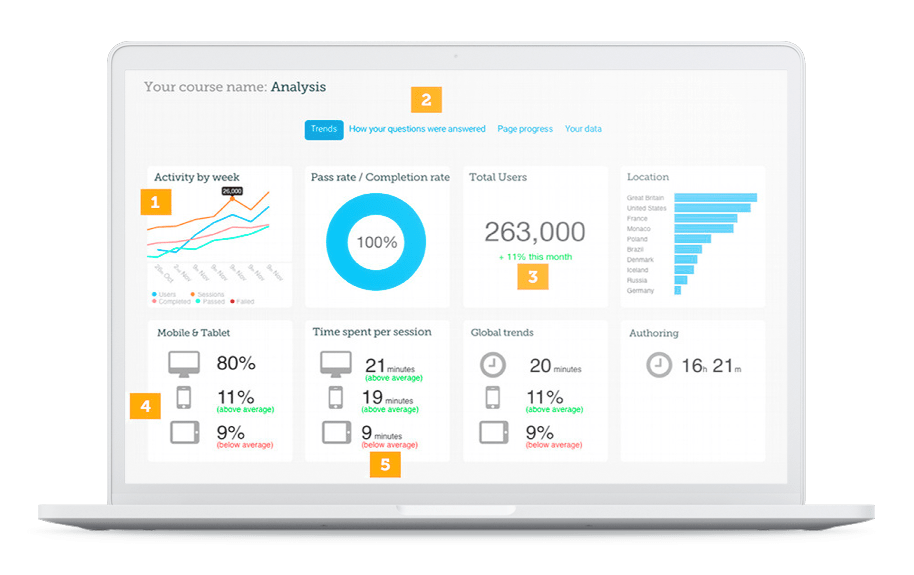The Association for Talent Development reveals that businesses that provide their workforce with comprehensive training programs have 218% higher income per employee than firms without formalized training. Moreover, companies that launch corporate training enjoy a 24% higher profit margin. Sounds staggering indeed, but the stats don’t lie.
However, how to understand you launched the optimal program that would pay off? Improved employee productivity and increased ROIs seem the most evident indicators of success. But it’s only the tip of the iceberg — there are many other important eLearning analytics metrics that can help you create personalized training programs and analyze their effectiveness.
What are they and how to use them right? Read on to find the answers.
Training needs analysis: Start with essentials
What makes up an efficient training program? For each company it’s a different set of components, and to generate yours, start with performing a deep business case analysis and identifying company-wide OKRs.
To understand whether you have the necessary expertise and resources for achieving these goals, thoroughly analyze the current skills level in your organization and create a comprehensive skills matrix for each department. The comparison of the things your staff is good at against the criteria you set at the first stage will help you identify knowledge gaps and empower you to build the optimal training programs, while including only relevant, value-generating courses in your learning management system.
If you want to take eLearning analytics up a notch, invest in competitive research and talent market analysis. Underpinned by the results of these investigations, you’ll have a better picture of what’s happening in the industry you’re in — innovations, financial indicators, talent acquisition and retention, etc. — and can adjust your training programs accordingly.
Learner satisfaction analysis: Revamp engagement
It’s not new that employee engagement notably influences workforce performance and as a result the company’s overall success.

Employee engagement
The same with staff training: the more motivation, comfort, and engagement you provide, the more productive your workforce is. But how do you make sure your employees get what they need from your training program and have an outstanding learning experience? Maybe they are struggling with a certain topic, want more gamification for a particular course, or need additional interactions with tutors?
To better understand learner intentions and be able to accordingly adjust your training programs, take a deep dive into user interaction with your LMS and learning materials. To wit, a thorough learner web log analysis will empower you with data on the most and least visited pages and sections, duration and number of visits, as well as user system access logs.
Performing an advanced learner life-cycle analysis is critical for examining KPIs related to individual learners or groups — such as technology adoption level and comparative use of resources across various subject areas. And the results of a comprehensive cross-device usage analysis will help you decide whether you need to invest in mobile learning development to optimize your system for mobile and tablet.
Besides, by enhancing your LMS with emotion recognition and NLP techs, you can directly analyze learner feedback and make the necessary changes in your educational curriculum, including learning formats, communication methods, course duration, and more.
How we can help
Does your eLearning analytics work the way you expected? Are your training programs paying off? Our eLearning consulting experts will help you effectively deal with these and other learning analytics challenges.
Employee performance analysis: Improve knowledge retention
Learner progress analysis is a central cog in the eLearning analytics machine. That’s why besides assessing course completion rates, pay particular attention to learner performance throughout the entire course. An extensive analysis of intermediate results will allow you to optimize your training strategy in real time, for instance, by launching additional training activities.
Instead of simply looking at test scores, leverage customizable metrics to understand how employees have fared during each step of the task and what new knowledge and skills they have acquired. Use the collected insights to personalize the eLearning experience for individual employees or groups and find out what gaps still need to be filled.

Learner performance
Source: Elucidat
Analyze employee expertise level before and after the course and compare the results in your LMS. Present the results of this comparison in interactive dashboards and share them with employees as well as all stakeholders.
Even after the course is completed, eLearning analytics can still be an indispensable element for making strategic decisions within your organization. In particular, when paired up with CRM software, your learning management system can gauge the impact training has on sales and conversions and give data-driven insights into whether this particular program has paid off or not.
LMS performance analysis: Ensure frictionless learning experiences
LMS performance should never be an afterthought, as poor system functioning will negatively affect the overall learning experience. To make sure your system won’t fall under high load, for example, when thousands of learners are simultaneously watching a new video material or passing an exam, accurately track its performance in real time. An advanced QoS tool will enable you to perform latency monitoring as well as bitrate and dropped frame analysis — to timely prevent possible bottlenecks.
If you use a CDN to seamlessly stream seminars, take advantage of its built-in analytics capabilities to get granular insights into how your video performs across devices, locations, ISP networks, browsers, and more. Also, CDN-based analytics will empower you to examine audience behavior, traffic, and threats.
So that your employees could enjoy a stellar viewing experience, raise the bar of video streaming with ML-fueled quality control. Such an innovative solution integrated into your LMS will automatically spot any content anomalies — like glitches and artificial text — making sure that only high-quality content will go into production.
Start reaping eLearning analytics benefits now
From extensive training needs and learner satisfaction analysis to employee productivity and LMS performance tracking, sophisticated eLearning analytics can pave the way for effective corporate training, resulting in increased revenue in both short- and long-term period.
With multi-year expertise in eLearning software development, we can consult you on the best ways of leveraging analytics for your corporate training. Just fill in the form below to start discussing the details.

























